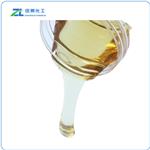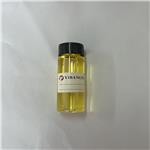Chemical Properties
Pot marigold is an annual (sometimes biennial), pubescent herb, growing in the Mediterranean region. The plant
grows up to 60 cm (2 ft), covered with glandular hairs and has yellow-orange flowers, alternate greenish-gray leaves (the superior,
lanceolate; the radical, oblong) and spindle-shaped roots. The flowers are large heads with yellow or orange rays. An oil of little
or no importance is distilled from the dried flowers in approximately 0.02% yields. Pot marigold should not be confused with
tagetes, known also as marigold. The flowers are the part used. Pot marigold has an intense, herbaceous odor with a slightly bitter,
tonic flavor.
Definition
Extractives and their physically modified derivatives. Calendula officinalis, Compositae.
Composition
The main constituents of the oil include bitter principle (chemically unidentified), saponins, calendulin (a
cartenoid), malic and ascorbic acid and mucilages.
Taste threshold values
Taste characteristics at 10 ppm: green floral, spice, apple, tropical fruitlike with woody nuances.


